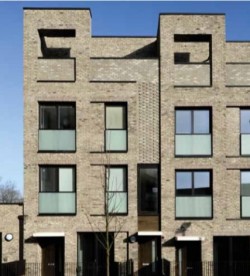Arup is the latest organisation to publish advice and guidance on how to realise the benefits of offsite construction. The new report focuses on the role of the planning system and how it could reform to boost housebuilding numbers.
As discussed at length in many of this magazine’s Roundtable events over the last 18 months, the sluggish planning system has been a key obstacle in offsite methods delivering the huge level of housing needed across the UK’s expanding communities.
Although the profile of offsite has never been higher with acceptance of offsite methods healthy, there is pressure mounting to restructure procurement practices generally and make planning a quicker, easier process to navigate – potentially incentivising and offering a fast track option – where certain obligations can be relaxed or refined. There are cases where the time taken to process a planning application is actively hindering one of offsite construction’s key benefits. Likewise the speed at which utility companies are responding to the pace of offsite construction and site preparedness has to be addressed.
In response to many issues surrounding planning, construction and engineering consultant Arup, recently published a new industry report: ‘How Modern Methods of Construction Can Deliver ‘More’ Through the Planning System.’ The report finds the planning system ‘too rigid’ to support offsite methods to create the homes the UK needs. The research sought a range of contributions from organisations including: Future Cities Catapult, Greater London Authority, Homes England, social entrepreneur Lord Nat Wei, Mark Farmer, Ministry of Housing, Communities and Local Government, Royal Town Planning Institute and Swan Housing Association.
While much industry research has focused on the financial or technical barriers to offsite adoption, the report concentrates on reforms of the planning system required for offsite to truly make a difference. Added to this are the opportunities and actions that could help planning authorities and other users of the planning system utilise offsite to ‘greater and easier’ degrees.
“There’s evidence which shows the current planning system cannot deliver MMC at scale and does not understand the opportunities it offers,” says Vicky Evans, Residential Business Leader at Arup and co-author. “Our research shows 265,000 extra homes could be built in the next 10 years if one-third of new homes built used modern methods of construction. Developers, local authorities and Homes England must now work together to change attitudes and introduce a streamlined planning process that supports innovative housebuilding.”
So what are these opportunities and actions identified in the report to improve the way the planning system and the offsite industry and its clients operate? One potential answer is the return of the historic architectural ‘pattern book’. “Local planning authorities should consider a patternbook approach embedded within a design code, which could establish parameters for style, daylighting/ fenestration and space standards and implemented using a local development order (LDO), which could indicate the scale of development and site layout.”
Local planning authorities should encourage the use of LDOs for offsite developments and “should turn around applications where an LDO is in place within 28 days.” This reduces risk for developers and provides more certainty over planning timescales by ‘front-loading the planning process, through a product-led rather than a project-led approach’. This could provide certainty to developers and speed up the planning process and reduce the burden on already overworked planning departments.
“Offsite homes, using pre-agreed design specifications, could speed up decisions, streamline the rest of the process and reduce risk. Securing planning consent is a major milestone in realising the value of a site but too often permission is sought with limited consideration for how homes are going to be constructed. This can result in sub-optimal or unviable permissions, or costly amendments.
“Design codes can be used to set out a suite of design options which are all acceptable in planning terms and would enable the local planning authority to identify the external parameters relevant to a particular site or group of sites within which offsite units could be assembled in different combinations and maintain quality across a diverse portfolio of development.” Central to change is a ‘shift in attitude’. “A streamlined, risk-minimising approach will only be possible with a shift in the attitudes of some local planning departments. A pragmatic approach is also needed when applying planning conditions to offsite developments. It’s likely that the impact of construction will be less than traditional housebuilding.”
As with many aspects of future construction delivery, the combination of digital infrastructure innovations and offsite could also transform the planning system. “Design ‘evolution’ could be made more transparent by using digital platforms to demonstrate massing and cladding options and planning consent could be secured through semi-automatically generated reserved matter applications sent straight to the production line. This transformation could take place across the built-environment, with modular construction overcoming the complexities and uncertainty of traditional build sites and enabling transparency.
” Katie Kerr, Town Planner at Arup and co-author, says: “We see a future system where paper-driven planning applications are replaced with designs direct from digital platforms, selected by the buyer and pre-agreed with the local council, and once consented, are sent straight to the production line.” The report is packed with many wise options and potential solutions for local authorities and planning departments to consider when dealing with offsite delivery and ‘non-traditional’ building design. It summarises by saying offsite, “should play a vital role in tackling the housing crisis. It can also help meet planning policy objectives such as increasing the variety of homes and speed of development, enabling homes to be built on brownfield and awkward sites, improving build quality and reducing disruption from construction. MMC is about better products and processes, which aim to improve efficiency, quality, customer satisfaction, environmental performance, sustainability and programme. The MMC revolution is already underway. Now, to enable it to become widely used, all parts of the housing system need to align – and planning is a vital component of this.”









